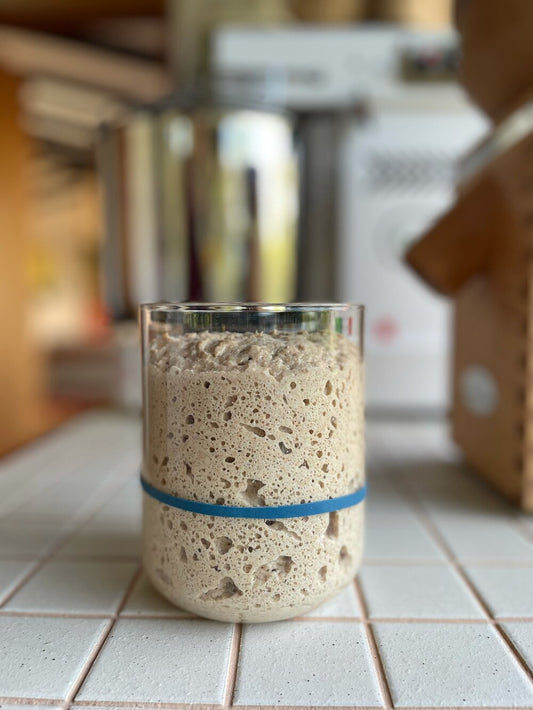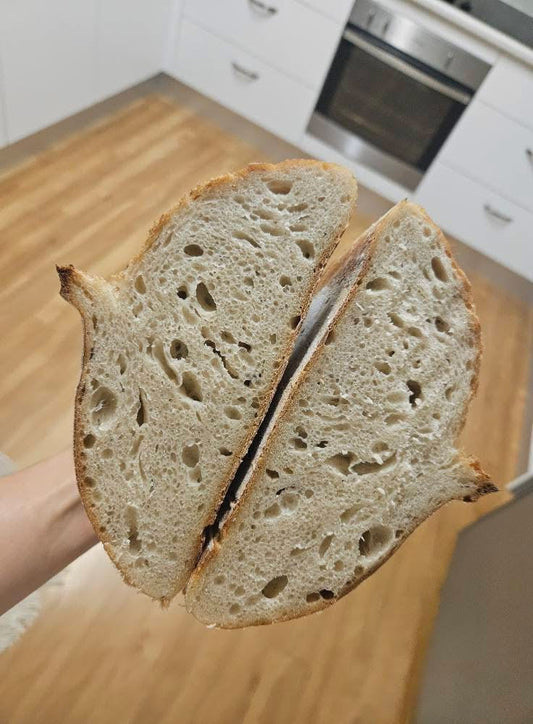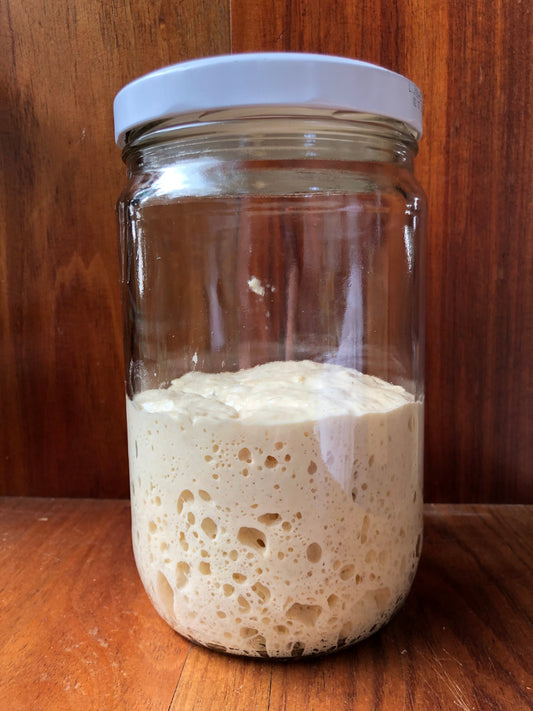Why Your Sourdough is Flat and Gummy (and How to Fix It for Good)
Few things are more disappointing than slicing into a freshly baked sourdough only to find it flat and gummy inside. It’s a common frustration for both new and experienced bakers — especially when the seasons change and the weather throws your dough off balance, leaving you feeling back at square one.
The good news? Flat or gummy sourdough isn’t a failure — it’s feedback. Your dough is telling you what went wrong, and once you understand why, you can easily fix it. Let’s dive into the main reasons your sourdough might collapse or stay dense, and how to prevent it in future bakes.

1. Overproofed Dough
What happens: When dough ferments for too long, the gluten network weakens and can no longer support the gas bubbles created by fermentation. The result is a flat loaf that spreads out rather than rising up.
How to fix it:
- Keep an eye on your dough, not the clock — in warm Australian kitchens, proofing times are often shorter.
- Try the poke test: gently press your floured finger into the dough. If it springs back slowly and leaves a slight dent, it’s ready to bake. If it collapses or feels overly bubbly, it’s overproofed.
- For warm climates, use cooler water (20–24°C) and reduce bulk fermentation time.
2. Underproofed Dough
What happens: If you bake before the dough has fully fermented, it won’t have enough internal gas to lift the loaf. This leads to a dense, gummy crumb that feels heavy and moist.
How to fix it:
- Allow enough bulk fermentation — look for the dough to rise about 50–75% and feel airy, with visible bubbles.
- Extend proofing time slightly or proof in a warmer spot (around 25°C).
- Make sure your starter is strong and active before mixing your dough.
3. Weak Starter
What happens: A sluggish starter means low yeast and bacteria activity, so your dough won’t rise properly — resulting in a flat, gummy loaf.
How to fix it:
- Feed your starter regularly (every 12–24 hours if kept at room temperature).
- Use your starter at its peak — when it’s doubled in size and bubbly.
- If it’s been neglected, revive it with a few days of consistent feedings at a 1:4:4 ratio (starter:flour:water).
4. Too Much Moisture or Poor Gluten Development
What happens: Overly wet dough or under-kneaded dough can’t trap gas effectively, leading to flat loaves and sticky, gummy crumbs.
How to fix it:
- Use high-quality bread flour (12–13% protein).
- Mix and stretch-and-fold your dough until it’s elastic and smooth.
- If your dough feels too wet, reduce hydration slightly (start around 70%) until you’re comfortable with handling.
5. Baking Too Early or at the Wrong Temperature
What happens: If you bake before your oven and baking vessel are fully preheated, your dough won’t get that initial burst of oven spring.
How to fix it:
- Preheat your oven and Dutch oven for at least 45–60 minutes at 230–250°C.
- Score the dough just before baking to help it expand properly.
- Bake with the lid on for the first 20–25 minutes to trap steam, then remove the lid to crisp up the crust.
6. Cooling Too Soon
What happens: Cutting into your bread while it’s still hot traps steam inside, making the crumb dense and gummy.
How to fix it:
- Always let your loaf cool for at least 1 hour on a wire rack before slicing.
- This allows moisture to redistribute evenly through the crumb.
Bonus Tip: Humidity Matters
In humid climates, dough can proof faster and retain extra moisture. Use slightly less water in summer, and store your starter and dough in a cool spot to slow fermentation.
Final Thoughts
Flat or gummy sourdough doesn’t mean you’ve failed — it’s just part of the learning curve. By adjusting proofing times, keeping your starter healthy, and watching your dough’s behaviour, you’ll start producing tall, airy loaves with that irresistible open crumb and crispy crust.
Keep baking, keep observing, and remember — every loaf teaches you something new.

Above: example of over-proofed bread.




